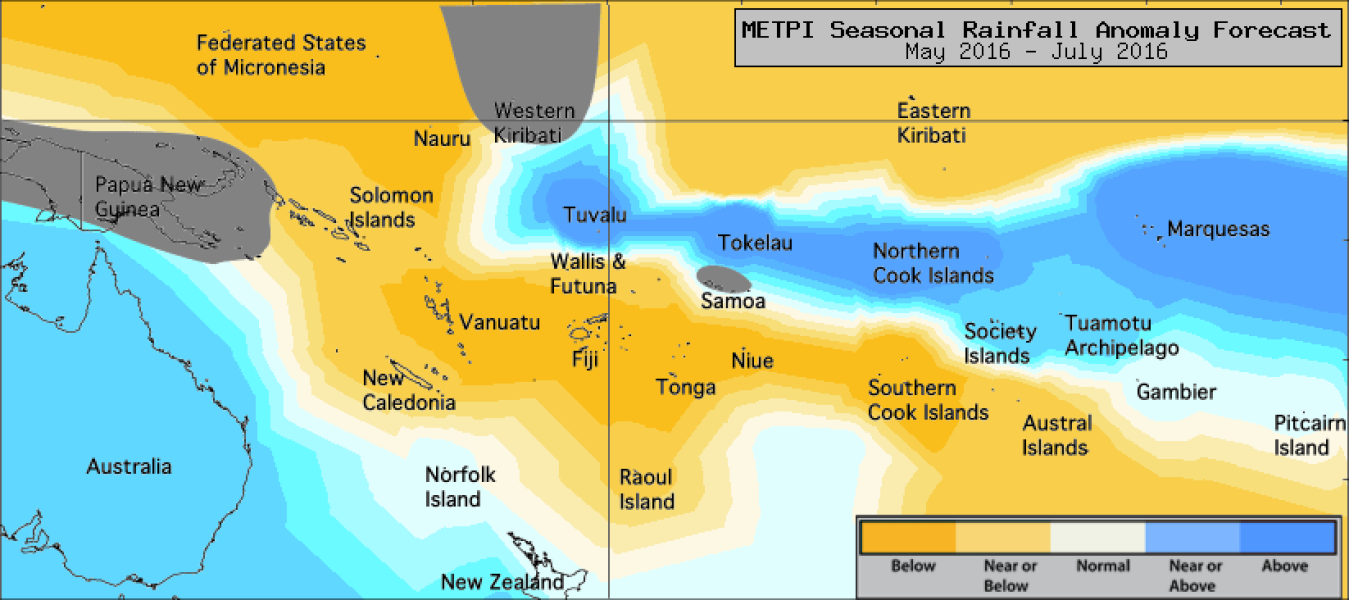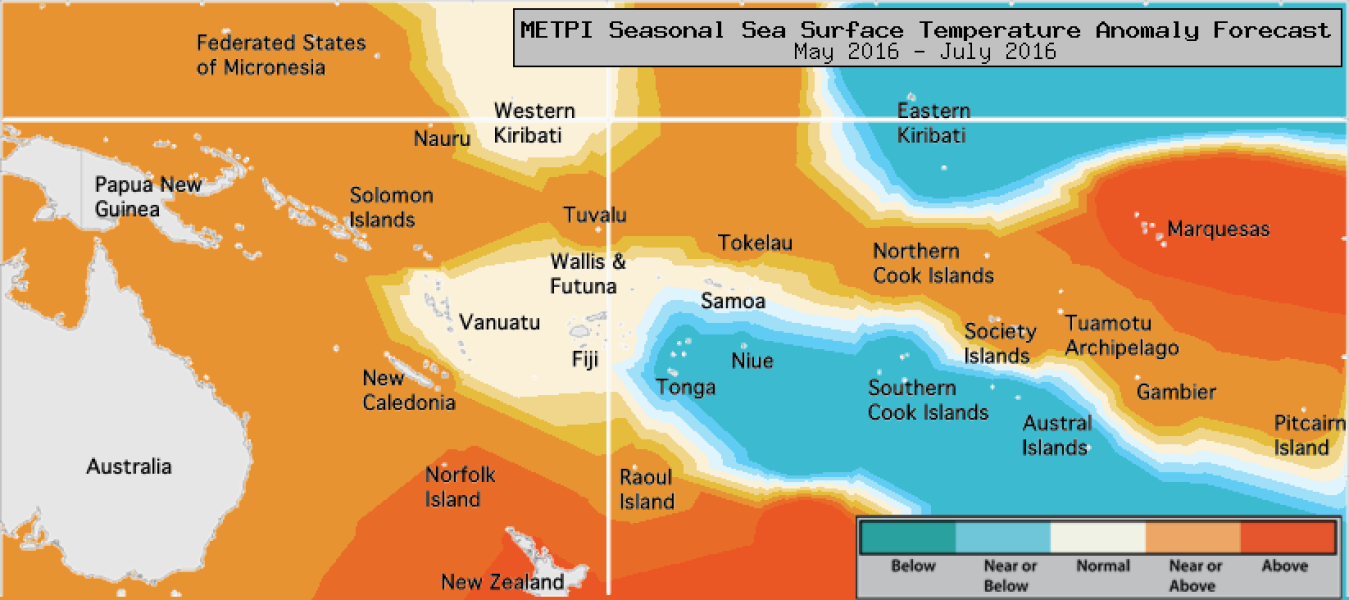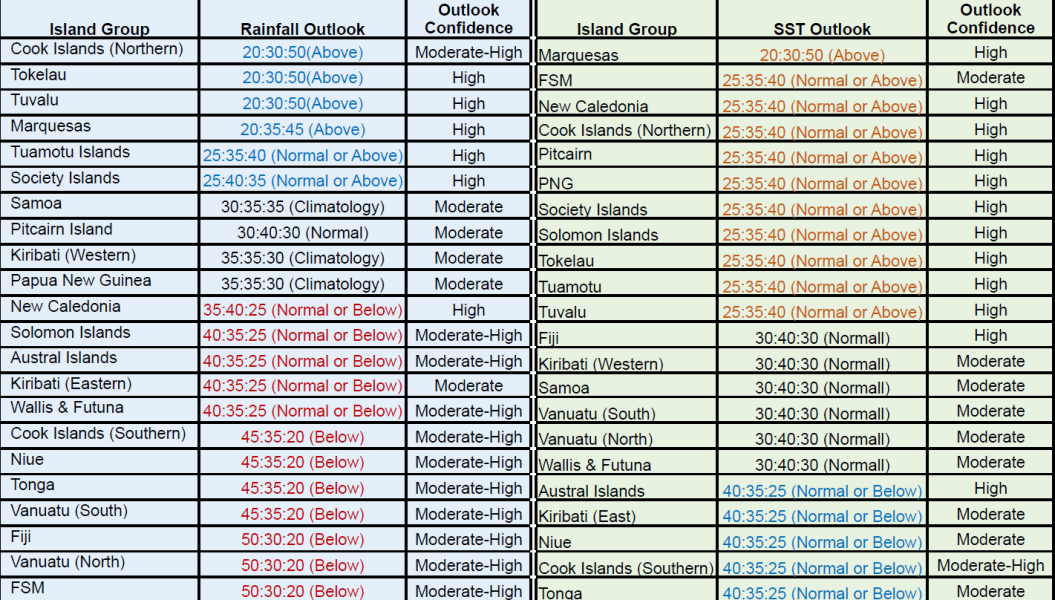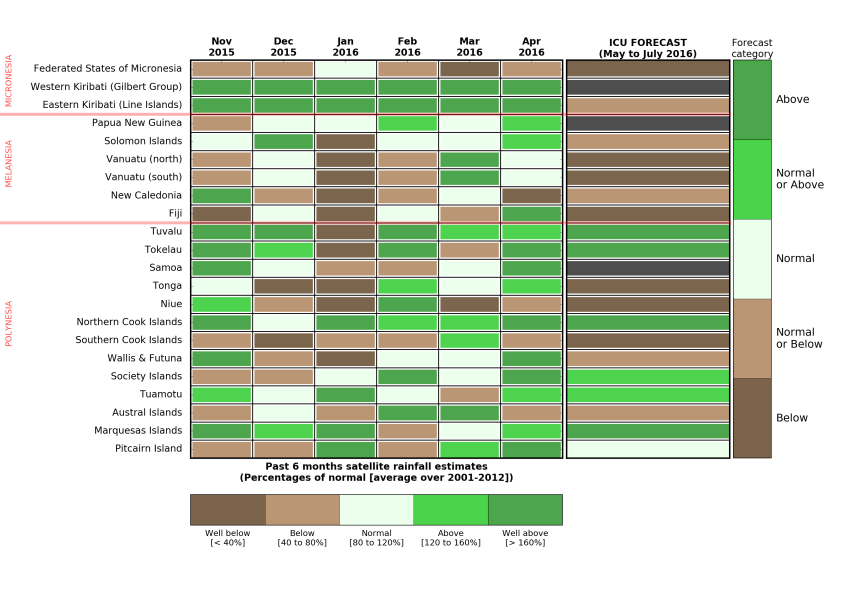The dynamical models are in agreement to forecast rapidly weakening El Niño conditions for the May – July 2016 period, with a return to neutral conditions over the season as a whole the most likely outcome (76% chance).
Clear signs of a probable transition to La Niña are present in the models forecasts, with the eastern equatorial Pacific now expected to experience normal or below normal rainfall. Below normal rainfall is forecast for the southern Cook Islands, Niue, Tonga, southern Vanuatu, Fiji, northern Vanuatu and the Federated States of Micronesia. Normal or below normal rainfall is forecast for New Caledonia, the Solomon Islands, the Austral Islands, eastern Kiribati and Wallis & Futuna. Above normal rainfall is forecast for the northern Cook Islands, Tokelau, Tuvalu and the Marquesas. Normal or above normal rainfall is forecast for the Tuamotu Archipelago and the Society Islands. No clear guidance is available this month for Samoa, western Kiribati and Papua New Guinea.
The current El Niño is forecast to rapidly weaken over the May – July 2016 and a return to neutral conditions is expected over the same period. The first signs of a probable La Niña event developping later in 2016 have started to appear, with cooler than normal surface ocean waters in the eastern Equatorial Pacific. The warm ocean waters east or Australia and around New Zealand are forecast to persist. Above normal SSTs are forecast for the Marquesas. Normal or above normal SSTs are forecast for the Federated States of Micronesia, New Caledonia, the northern Cook Islands, Pitcairn Island, Papua New Guinea, the Society Islands, the Solomon Islands, Tokelau, the Tuamotu archipelago and Tuvalu. Normal or below normal SSTs are forecast for the Austral Islands, eastern Kiribati, Niue, the southern Cook Islands and Tonga. The average region-wide hit rate for rainfall forecasts issued for the May – July season is about 58%, 5% below the average for all months combined. The confidence for the SST forecasts is moderate to high.




